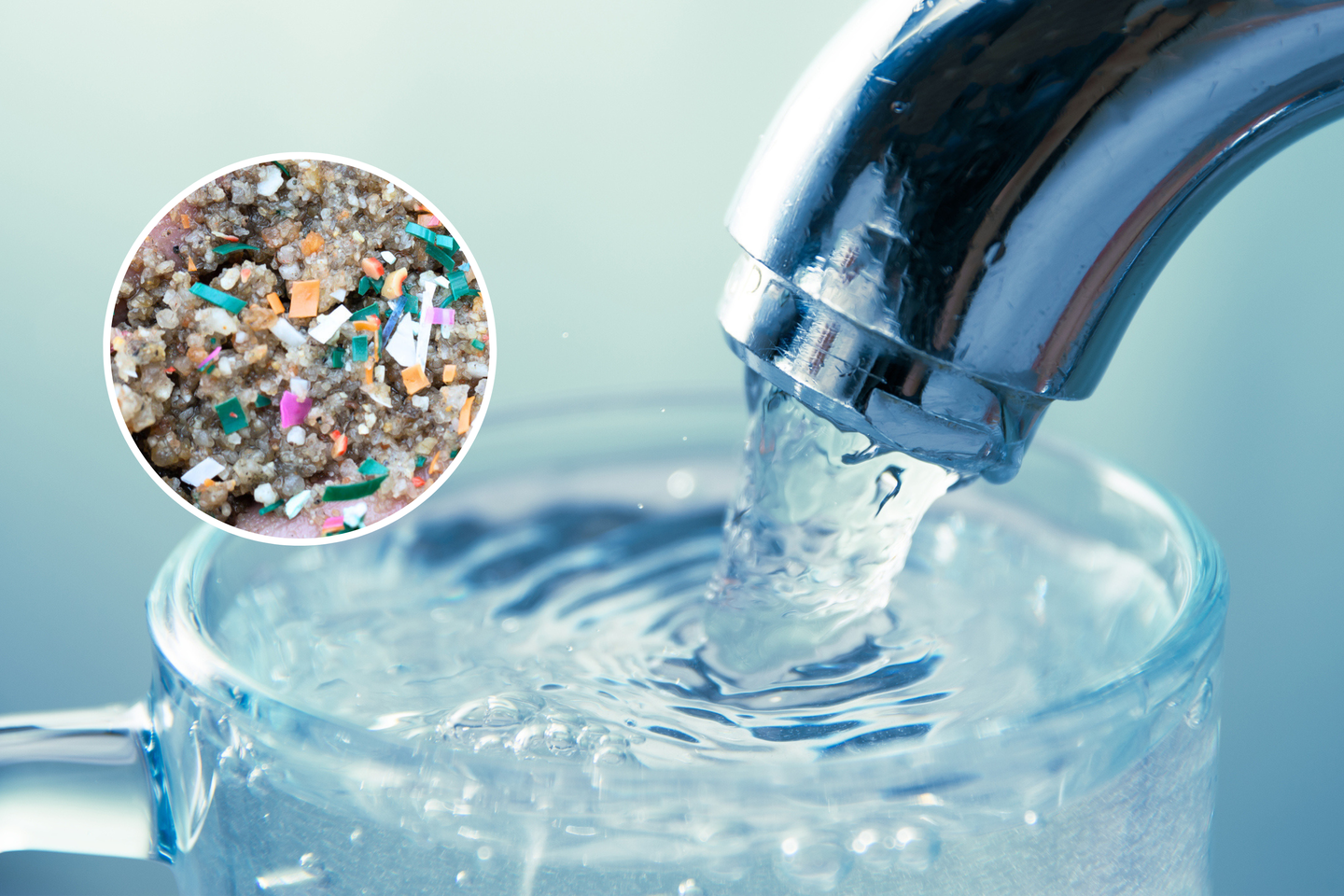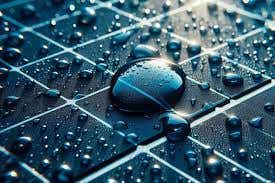Scientists Discover a Simple Trick to Eliminate Microplastics From Tap Water
Every day, tiny plastic particles called nano- and microplastics find their way into your drinking water and silently threaten your health.

Scientists found boiling tap water traps and removes up to 90% of harmful plastic particles. (CREDIT: CC BY-SA 4.0)
Every day, tiny plastic particles called nano- and microplastics find their way into your drinking water. Invisible to the naked eye, these fragments could silently threaten your health.
Recent research, however, provides hope through a surprisingly simple solution. Scientists have discovered that boiling and filtering tap water significantly reduces these harmful particles, offering a practical method to keep your drinking water safe.
How Plastic Particles Invade Your Drinking Water
Nano- and microplastics are tiny plastic bits that contaminate water sources around the world. Nanoplastics measure less than 1 micrometer, while microplastics range from 1 to 5000 micrometers.
These tiny plastics mostly originate from household items, packaging materials, and even clothing fibers that wash into rivers and lakes. Unfortunately, standard water treatment systems often struggle to remove these minuscule particles, especially nanoplastics.
Recent studies highlight how widespread this contamination is. Researchers analyzed 159 tap water samples from 14 countries. They discovered nano- and microplastics in nearly 81% of these samples, with common plastics like polystyrene, polyethylene, and polypropylene dominating the mix.
When you drink this water, plastic particles may accumulate in your body tissues, potentially causing health problems. Researchers have linked these plastics to changes in gut bacteria, insulin resistance, and liver disorders, though scientists are still investigating their long-term impacts.
The Surprising Power of Boiling Water
In Asian countries like China, Vietnam, and Indonesia, people traditionally boil tap water before drinking it. Boiling water was initially practiced to eliminate harmful bacteria and chemicals. However, new research reveals an additional benefit: boiling water can trap and remove plastic particles from tap water effectively.
Related Stories
Scientists from Guangzhou Medical University and Jinan University in China recently tested this theory. They took tap water samples containing known amounts of nano- and microplastics, then boiled them for five minutes. After letting the water cool for ten minutes, they filtered it through a standard coffee filter or a stainless-steel tea strainer.
The results were striking. Boiling hard water, which contains high levels of calcium and magnesium minerals, dramatically reduced the plastic particles. When water is boiled, these minerals create a white crust called calcium carbonate, or limescale, often seen inside kettles and pots. This limescale effectively traps plastic particles, allowing them to be filtered out.
The researchers observed an impressive removal rate. For water containing 180 milligrams of calcium carbonate per liter, boiling and filtering removed about 84% of the plastic particles.
Even better, water with higher mineral content (around 300 milligrams per liter) saw a removal rate of up to 90%. Soft water, containing fewer minerals, still benefited—boiling and filtering removed about 25% of the plastics.
Why Boiling Works So Well
What makes boiling water so effective at capturing plastic particles? According to the researchers, the secret lies in how heat affects calcium carbonate. When water heats up, calcium carbonate molecules start bonding together, forming solid crystals. These crystals attach to the surface of plastic particles, encapsulating them completely. As the water cools, these crystals sink, dragging the plastic down with them.
"This simple boiling-water strategy can 'decontaminate' NMPs from household tap water and has the potential for harmlessly alleviating human intake of NMPs through water consumption," the researchers wrote.
They also confirmed that the process works for both nanoplastics (extremely small particles) and larger microplastics. Using fluorescent polystyrene microspheres as test particles, they clearly observed how plastic particles got trapped within calcium carbonate crystals. Additional tests with plastics like polyethylene and polypropylene, aged under sunlight to mimic environmental conditions, showed similar promising results.
Practical Advice for Safer Drinking Water
This boiling method is not just effective—it's also practical. Most homes already have the tools needed: a pot, kettle, or stove, and a simple strainer. Researchers emphasized using metal or glass containers instead of plastic to boil water, as heated plastic may release harmful chemicals like bisphenol or antimony.
While boiling water significantly reduces nano- and microplastics, its effectiveness can differ depending on local water hardness. Areas with hard water benefit the most, but even soft water sees meaningful improvement. The researchers suggest boiling and filtering your water regularly to ensure consistent reduction in plastic exposure.
"Drinking boiled water apparently is a viable long-term strategy for reducing global exposure to NMPs," the research team noted. "Drinking boiled water, however, is often regarded as a local tradition and prevails only in a few regions."
By adopting this practice globally, communities can significantly decrease their daily exposure to harmful plastic particles, potentially improving public health in the long run.
Future Directions and Broader Implications
Although boiling water offers an immediate and practical solution, researchers stress that more investigation is needed. Water conditions vary significantly across the globe, making it essential to test this method in many regions to confirm its effectiveness universally.
The researchers remain optimistic that boiling water will become a common practice outside traditional regions. They envision widespread adoption as an achievable goal, driven by the simplicity, affordability, and demonstrated benefits of the method.
“Our results have ratified a highly feasible strategy to reduce human NMP exposure and established the foundation for further investigations with a much larger number of samples,” the researchers explained.
The team also hopes future studies will uncover more about the health risks of nano- and microplastics. Understanding these risks will further encourage communities to adopt safer water practices.
A Simple Step Toward Healthier Living
Plastic contamination in tap water is alarming, yet the solution may be simpler than expected. Boiling your water could significantly reduce harmful nano- and microplastics, keeping you healthier with minimal effort.
This straightforward strategy empowers you to take charge of your health using basic household items. As research continues to highlight the hidden dangers of plastic pollution, simple solutions like boiling water provide immediate, accessible means to protect yourself and your family. By turning this practice into a daily habit, you actively participate in the global fight against plastic contamination, improving both your health and the environment.
Note: The article above provided above by The Brighter Side of News.
Like these kind of feel good stories? Get The Brighter Side of News' newsletter.
Joshua Shavit
Science & Technology Writer | AI and Robotics Reporter
Joshua Shavit is a Los Angeles-based science and technology writer with a passion for exploring the breakthroughs shaping the future. As a contributor to The Brighter Side of News, he focuses on positive and transformative advancements in AI, technology, physics, engineering, robotics and space science. Joshua is currently working towards a Bachelor of Science in Business Administration at the University of California, Berkeley. He combines his academic background with a talent for storytelling, making complex scientific discoveries engaging and accessible. His work highlights the innovators behind the ideas, bringing readers closer to the people driving progress.



